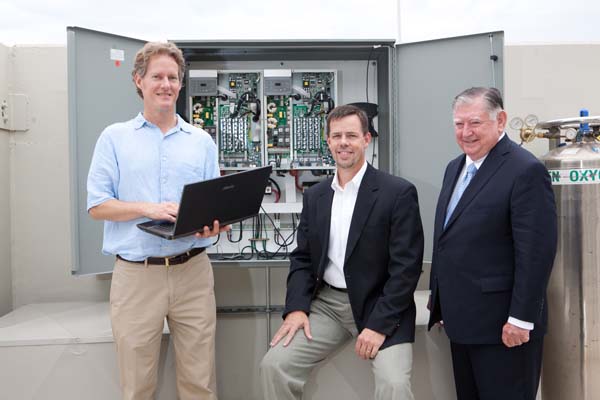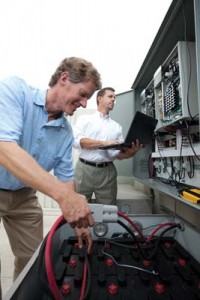The story of LGW begins in a rural village in China. Bob Winkleman, a lawyer-turned-battery expert, had developed a battery-powered trike that could help Chinese farmers get from place to place, and he was testing a prototype. About two hours into his ride, the battery died on the trike, and Winkleman thought he was stuck. After he let the battery rest for a while, Winkleman was surprised to see the reading his volt meter rise all the way up to 14 volts, and he was able to start the trike up again and ride all the way back.
It is not unusual for seemingly dead batteries to come back to life, a phenomenon known as “battery bounce.” But Winkleman began to wonder if he could use battery bounce to increase battery efficiency. Winkleman began what he calls “the process of eliminating ignorance,” in order to find out the best way to take advantage of battery bounce, and the result of this process is LGW’s patented energy management system. Using this system, LGW can make super-efficient batteries, which can store energy to augment the power grid or help solar and wind powered homes disconnect from the grid completely.
Winkleman and John Macguire, a former Tyson chief financial officer and LGW’s CFO, realized that the best way to develop and commercialize their technology was to work with the University of Arkansas. They teamed up with Roy McCann, associate professor of electrical engineering, and set up an office in the Genesis Technology Incubator.
The Technology
LGW’s system uses two lead acid batteries. While one is discharging, the other battery rests. Batteries rely on electrochemical reactions to move electricity between the electrodes. When a battery is charging or discharging, however, the molecules of these chemicals get displaced, moving away from the active surfaces. Without these reactants in place, the battery appears to be dead. After a rest period, however, the reactants redisperse and the battery will work again.
McCann explained that, by carefully designing the electrochemistry formulation of their batteries and using the cycle of discharge and rest, LGW maximizes this process. The energy management system also eliminates another limitation on battery efficiency by making sure each cell in their batteries charges and discharges at the same rate. In other batteries, cells closer to the electrodes tend to fail before the ones in the middle, compromising the strength of the entire battery. Making sure their batteries don’t contain these weak links further increases the efficiency of the energy management system.
The Importance of Storage
Energy storage is a vital part of any renewable energy system. Solar and wind are not consistent energy sources, and a home or business that relies on this kind of power must have stored energy that can be used when sun has set and the air is still. Energy storage could also make the traditional electrical grid more efficient. Batteries that charge during periods of low-demand and discharge during peak times could eliminate the need for the extra generators that utility companies keep on hand for high-demand hours. This would save money for both the utilities and their customers. In the past, however, energy storage systems had to be very large and very heavy to store the amount of energy needed for these purposes, making them impractical for everyday use.
LGW’s system can change that. Their two-battery unit, which is about the size of an air-conditioning unit, can be installed outside a home or business. In addition to providing energy storage for the building, the system monitors energy use, taking a reading every five seconds. These readings are used to program the charging and discharging cycles, so that the system operates as efficiently as possible.
In cooperation with electric companies and using funding from the Department of Energy, LGW has installed their energy management system in five locations in order to test and refine the technology. These sites include the Fayetteville Public Library, private homes, commercial buildings and industrial facilities. Some of them use only power from the grid, while others incorporate solar arrays or wind turbines. Using these test sites, LGW can evaluate their systems in a variety of settings. Eventually, they hope to use a combination of solar arrays and battery storage to power their own offices.
Bridging the Gap
David Moody, who joined LGW as president in 2011, explained that the U of A was instrumental in helping their company avoid what he calls “the valley of death,” which lies between a good idea and a commercially viable product. In order to develop their products, LGW needs equipment, facilities and expertise. “All of those things take money,” he said, “unless you have a partner like the U of A who is willing to get in boat and give you access to those things.”
In addition, Moody explained that having offices at the Arkansas Research and Technology Park means “you have all this brain power within a couple hundred feet in any direction. That’s a great resource to have…being able to go down the hall and talk to people who have been successful at getting grants and commercializing products.”


